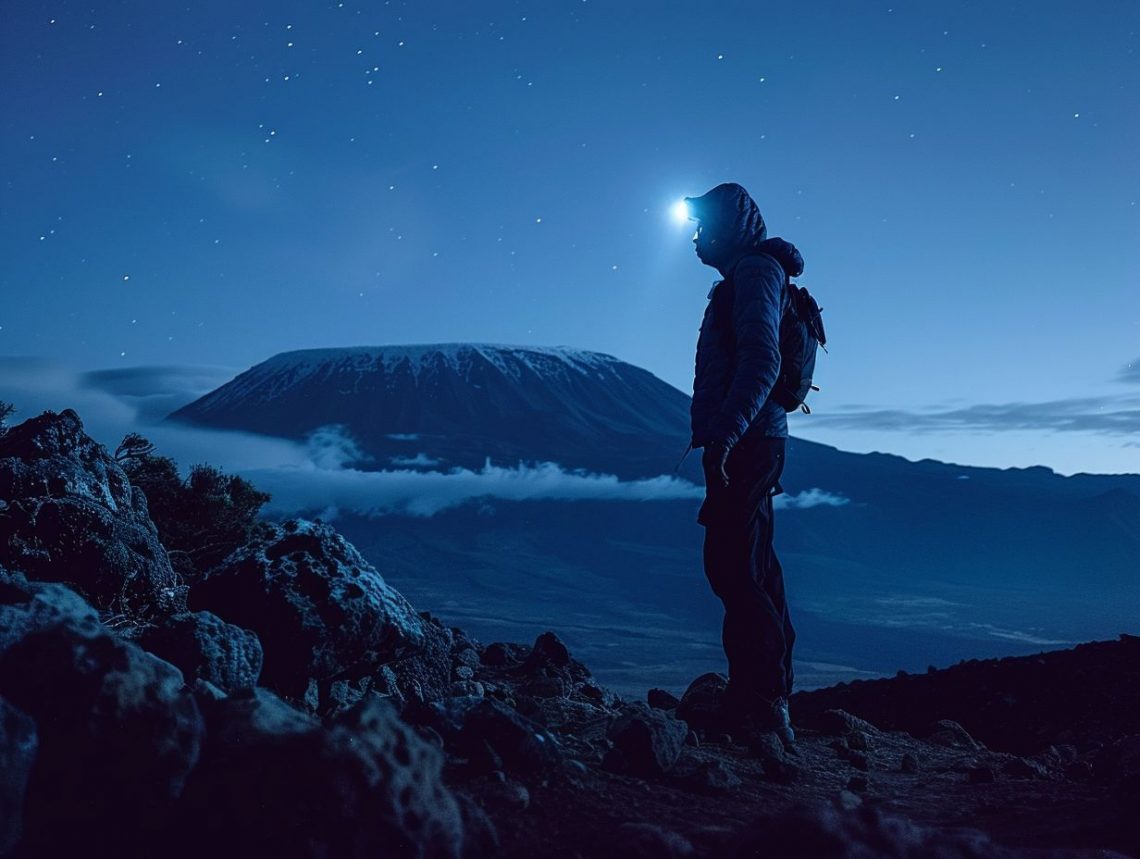
What Should I Wear For Summit Night On Kilimanjaro
As you prepare for summit night on Kilimanjaro, proper clothing becomes crucial for a successful ascent. Understanding the temperature and weather conditions you will face is key to selecting the right gear. From base layers to headwear, gloves, and footwear, each piece of clothing plays a vital role in keeping you warm and comfortable during the challenging climb.
In this article, we will discuss the recommended clothing and gear you should bring for summit night to ensure a safe and enjoyable experience on the highest peak in Africa.
Key Takeaways:
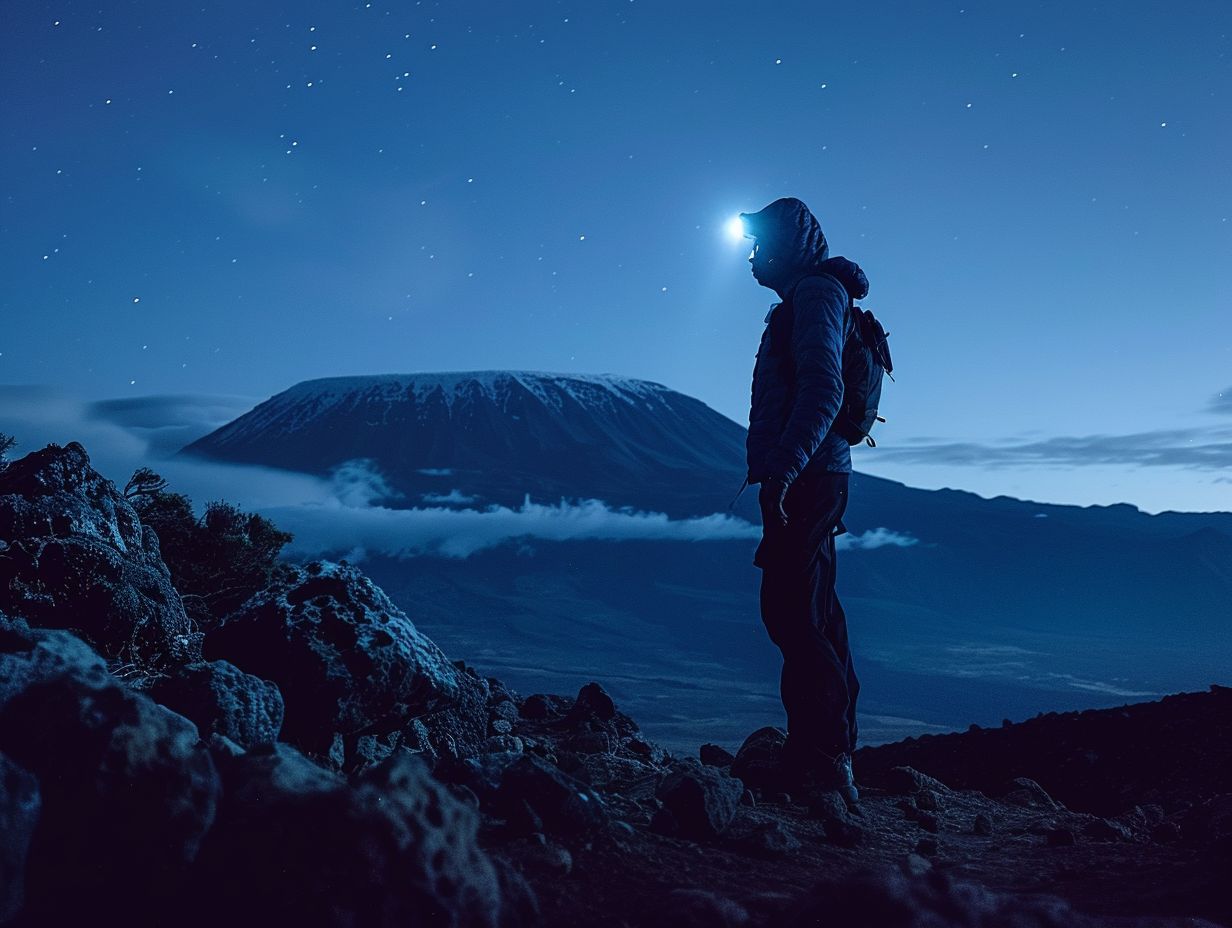
- Proper clothing is crucial for summit night on Kilimanjaro, with temperatures dropping below freezing and strong winds.
- Layering is key for staying warm and comfortable, with a base layer, insulating layer, and outer layer recommended.
- Other essential gear includes a sturdy backpack, headlamp, water bottle, and other items like hand warmers and sunglasses.
What to Expect on Summit Night on Kilimanjaro?
Summit night on Kilimanjaro is both exhilarating and challenging, as climbers embark on their final ascent to Uhuru Point, the highest peak in Africa, during the early hours of the morning. The night is filled with anticipation, determination, and the sheer will to reach the summit.
As the crisp mountain air surrounds them, climbers put one foot in front of the other, guided only by the beams of their headlamps cutting through the darkness.
The trail twists and turns, testing their physical and mental strength as they navigate the rocky terrain, occasionally pausing to catch their breath and take in the breathtaking starlit sky above.
The altitude adds an extra layer of difficulty, with each step feeling heavier than the last. Despite the fatigue creeping in, the desire to conquer the summit serves as a powerful motivator, pushing climbers onwards.
Why is Proper Clothing Important for Summit Night?
Proper clothing is crucial for summit night on Kilimanjaro to ensure climbers stay warm, dry, and comfortable throughout the challenging ascent.
The right gear can make all the difference in terms of safety, performance, and overall experience on the mountain. Layering is key, starting with a moisture-wicking base layer to keep sweat away from the body, followed by an insulating layer to retain body heat.
Waterproof and windproof outer layers are essential to protect against the harsh elements. Wearing comfortable, sturdy boots with good insulation is vital to prevent frostbite and maintain traction on the icy terrain.
It’s also crucial to have a headlamp for navigating in the dark, thermal gloves, and a warm hat to preserve heat.
What are the Temperature and Weather Conditions on Summit Night?
During summit night on Kilimanjaro, climbers can expect extreme cold temperatures that often drop below freezing, especially as they ascend to higher altitudes. The weather conditions can vary from clear skies to high winds and occasional snowfall, adding to the challenge of the climb.
These harsh weather conditions are primarily due to the high altitude of Kilimanjaro, which exposes climbers to low oxygen levels and frigid temperatures. Layering clothing becomes crucial under such circumstances to combat the cold.
Additionally, temperatures at the summit can range from -10 to -20 degrees Fahrenheit, blustery winds can make it feel even colder and occasional snowfall can further impede visibility
These elements combine to create a demanding environment for climbers, testing their resilience and endurance.
What Clothing is Recommended for Summit Night?
Choosing the right clothing for summit night on Kilimanjaro is essential to stay warm and protected against the harsh mountain conditions.
The recommended clothing includes base layers that are moisture-wicking and help regulate body temperature, insulating layers such as fleece or down jackets to trap heat, and windproof and waterproof outer layers to shield from the elements.
Additionally, headwear like a beanie or balaclava, insulated gloves, and sturdy footwear with good traction are crucial to combat the cold and ensure safety during the challenging ascent to Uhuru Peak.
1. What Type of Base Layer Should I Wear?
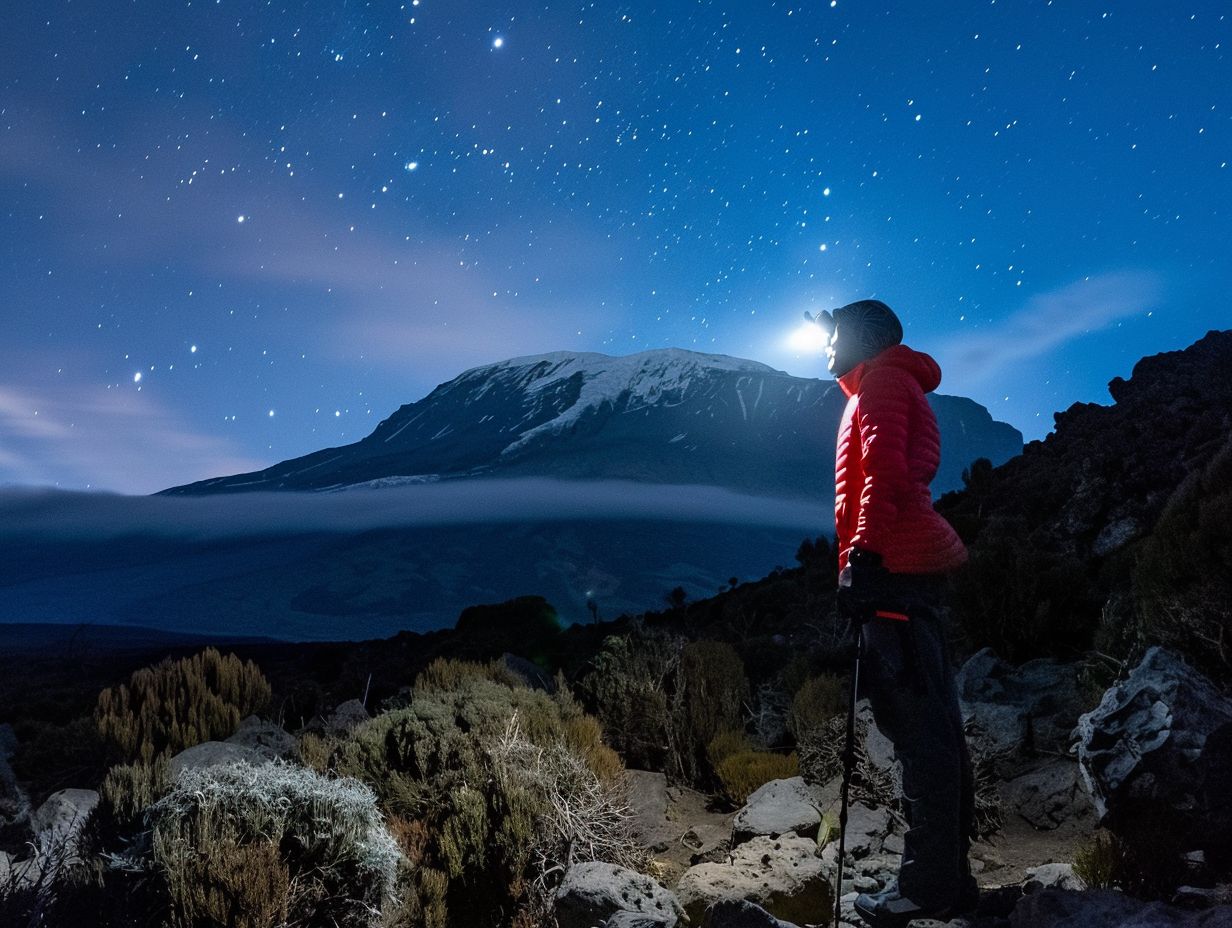
The base layer you wear for summit night on Kilimanjaro should be made of moisture-wicking material to keep you dry and comfortable throughout the climb. It serves as the foundation of your clothing system, regulating your body temperature and moisture levels.
Moisture-wicking base layers are designed to pull sweat away from your skin, allowing it to evaporate quickly, preventing that clammy feeling that can lead to discomfort and potentially hypothermia in extreme conditions.
These base layers are typically made from synthetic fabrics like polyester or merino wool, which have excellent moisture management properties.
The ability of a base layer to wick away moisture efficiently is crucial as it helps in maintaining your body’s natural thermal regulation, keeping you warm when it’s cold and cool when it’s hot.
2. What Type of Insulating Layer Should I Wear?
An insulating layer is essential for summit night on Kilimanjaro to provide warmth and insulation against the cold temperatures. Options include a down jacket for top insulation and fleece pants for lower body warmth.
Having the right insulating layers can make a world of difference during your climb.
- The down jacket’s natural down-filled interior traps heat effectively, keeping you cozy even when the mercury drops.
- Pairing it with fleece pants, known for their softness and warmth retention properties, ensures your lower body is shielded from the biting cold.
- Together, these layers create a thermal barrier that helps regulate your body temperature, preventing heat loss and potential discomfort.
Properly chosen and worn insulating layers enable climbers to focus on the exhilarating journey ahead, without the distraction of shivers and chills.
3. What Type of Outer Layer Should I Wear?
When facing extreme weather conditions at high altitudes, having the right outer layer can mean the difference between a successful summit and potential discomfort or even danger.
Waterproof jackets and pants specifically designed for mountaineering offer vital protection from rain, sleet, and snow, ensuring that climbers stay dry and warm.
The fabrics used are not only waterproof but also breathable, preventing moisture build-up from sweat and enhancing overall comfort. The adjustable hoods, high collars, and Velcro cuffs help seal out the elements, keeping climbers shielded from the harsh environment.
Waterproof outer layers are a crucial part of a climber’s gear setup, providing essential insulation and protection on Kilimanjaro’s challenging summit night.
4. What Type of Headwear Should I Wear?
Choosing the right headwear for summit night on Kilimanjaro is crucial to protect against heat loss and sun exposure. Options include a Knit Hat for warmth and a Neck Gaiter to shield your neck and face from the elements.
When preparing for the summit night on Kilimanjaro, it’s essential to consider the unpredictable weather conditions at high altitudes.
- A Knit Hat not only provides insulation but also covers your ears, safeguarding them from frostbite.
- A Neck Gaiter serves as a versatile piece of gear; you can use it to protect your neck and face from harsh winds, dust, or even UV rays.
These accessories are lightweight and compact, fitting easily into your climbing pack for quick access when needed.
5. What Type of Gloves Should I Wear?
The gloves you choose for summit night on Kilimanjaro should offer insulation, dexterity, and protection against frostbite. Opt for high-quality gloves that balance warmth with the ability to handle equipment and perform tasks comfortably.
- Insulation is vital to keep your hands warm in the freezing temperatures, preventing frostbite.
- Concurrently, having good dexterity is essential for handling ropes, equipment, and adjusting gear efficiently. Look for gloves that provide a good grip while still allowing you to move your fingers freely.
- Pay attention to the material of the gloves, opting for waterproof and breathable fabrics to keep your hands dry and comfortable throughout the ascent.
6. What Type of Footwear Should I Wear?
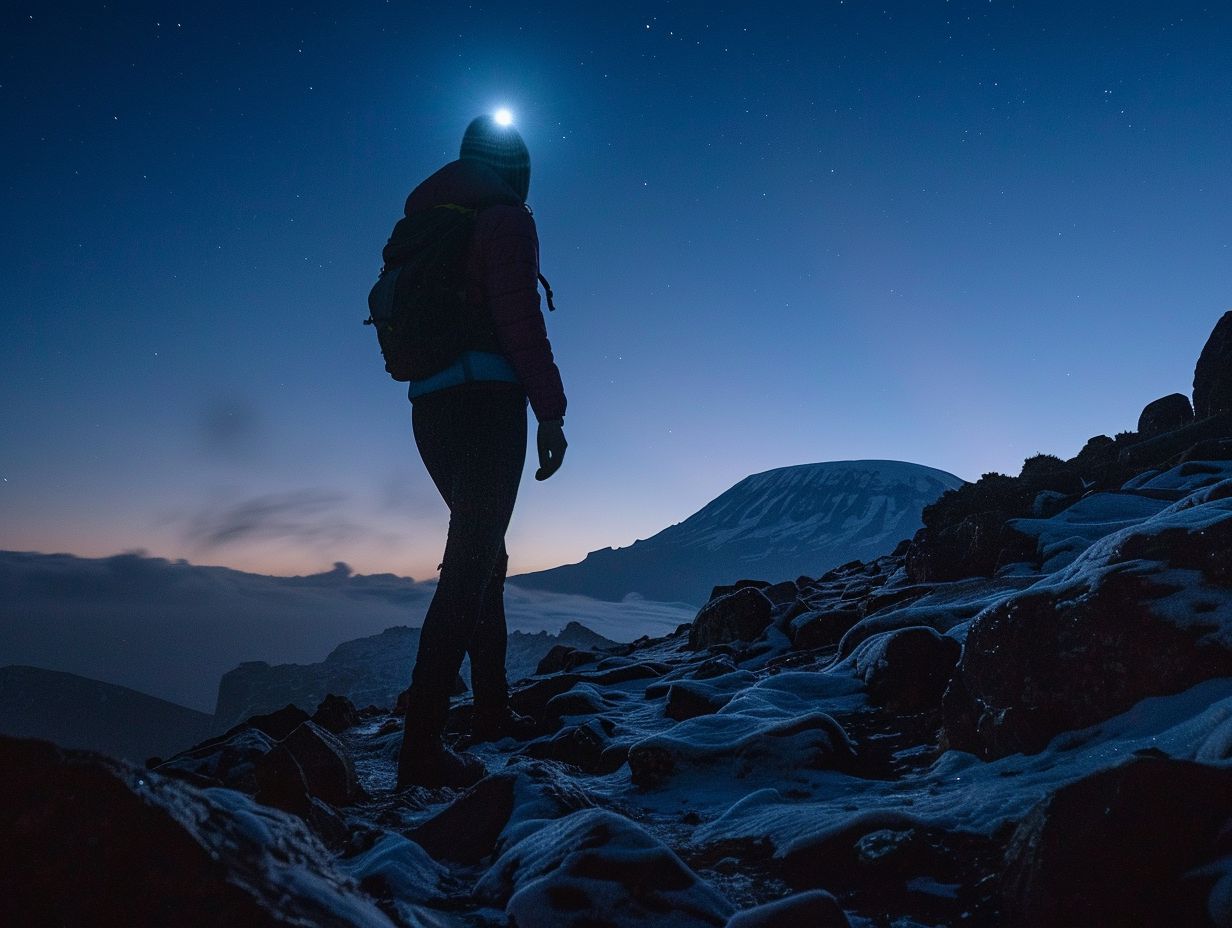
The footwear you wear for summit night on Kilimanjaro should provide warmth, traction, and support for the demanding terrain. Opt for sturdy hiking boots and wool socks to keep your feet dry, comfortable, and protected.
When climbing Mount Kilimanjaro, the right footwear can make all the difference between a successful summit attempt and discomfort.
- Hiking boots are essential as they offer ankle support and protection against rocks and uneven surfaces. Their durable soles provide traction on both rocky paths and slippery sections, ensuring you maintain stability even in challenging conditions.
- Pairing these boots with wool socks is key for moisture-wicking, warmth, and preventing blisters. Together, these items create a reliable barrier between your feet and the elements, allowing you to focus on the breathtaking journey ahead.
What Other Gear Should I Bring for Summit Night?
Along with clothing, essential gear for summit night on Kilimanjaro includes trekking poles for stability, a water bottle for hydration, sunscreen for UV protection, and electrolytes to maintain hydration levels and energy.
Summit night on Kilimanjaro demands additional preparation to ensure a successful ascent. Trekking poles are crucial for navigating the challenging terrain and providing support on steep inclines.
Proper hydration is key, making a durable water bottle a must-have item. The harsh sun at high altitudes necessitates the use of sunscreen to protect your skin from harmful UV rays. Replenishing electrolytes becomes essential to prevent fatigue and maintain peak performance during the climb.
What Type of Backpack Should I Bring?
Choosing the right backpack for summit night on Kilimanjaro is essential to carry your gear comfortably and efficiently. Opt for a sturdy, lightweight backpack with sufficient capacity and ergonomic design to support your essentials.
Look for backpacks that offer specialized compartments for your hydration system and easy access to essential items like snacks, headlamp, and extra layers. It’s crucial to ensure the backpack is adjustable to fit your body comfortably, reducing strain during the challenging climb.
Water resistance is another key feature to consider to protect your gear from unpredictable weather conditions on the mountain. Opt for a backpack with padded shoulder straps and a supportive hip belt to distribute the weight evenly and prevent discomfort or chafing during long hours of trekking.
What Type of Headlamp Should I Bring?
A reliable headlamp is a must-have for summit night on Kilimanjaro to illuminate your path in the darkness and navigate the terrain safely. Choose a durable headlamp with long battery life and adjustable brightness settings.
When selecting a suitable headlamp for your adventure, consider the lumens output to ensure sufficient brightness for the challenging conditions of Kilimanjaro’s summit night. Look for a headlamp that offers a comfortable headband to prevent discomfort during extended wear. Ensure a waterproof and shockproof design to withstand the unpredictable mountain environment.
Check the battery type required for the headlamp and ensure it is easily replaceable or rechargeable. Lithium-ion batteries are popular for their longevity and performance in cold temperatures, making them ideal for high-altitude expeditions like climbing Kilimanjaro.
What Type of Water Bottle Should I Bring?
Carrying an insulated water bottle is essential for summit night on Kilimanjaro to stay hydrated and prevent water from freezing in cold conditions. Choose a sturdy water bottle with adequate capacity and insulation properties.
Look for a water bottle that can hold at least 1-1.5 liters of water to ensure you have enough hydration for the long and strenuous ascent. Opt for a double-walled, vacuum-insulated bottle with a secure lid to keep your water from freezing during the cold night.
Insulation is crucial at high altitudes where temperatures can drop significantly, and having access to liquid is vital for maintaining energy levels and preventing altitude sickness.
A durable and leak-proof bottle will withstand the rough conditions of the climb and provide you with a reliable hydration source throughout the expedition.
What Other Essential Items Should I Bring?
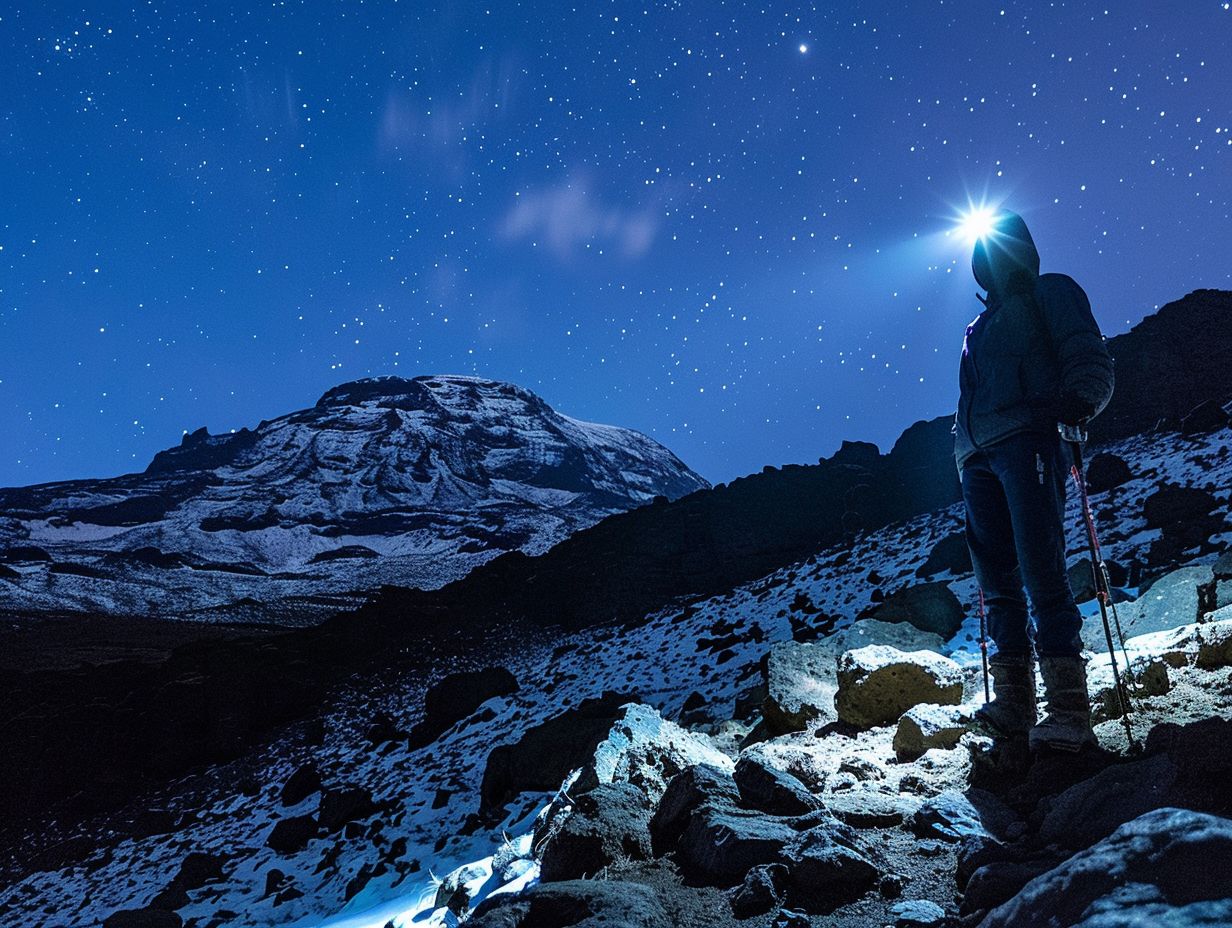
Along with clothing and gear, essential items for summit night on Kilimanjaro include sunscreen for sun protection, gaiters for lower leg insulation, and waterproof boots to keep your feet dry and warm in snowy conditions.
- Proper application of sunscreen is vital to prevent sunburn and skin damage at high altitudes where UV radiation is stronger.
- Gaiters, on the other hand, act as a barrier against snow, debris, and moisture that could seep into your boots, ensuring your lower legs stay protected and warm.
- Investing in quality waterproof boots will significantly reduce the risk of frostbite by keeping your feet dry and maintaining warmth, which is crucial during the cold, snowy conditions encountered during the summit attempt.
Frequently Asked Questions:
1. What Should I Wear For Summit Night On Kilimanjaro?
A: Summit night on Kilimanjaro can be extremely challenging and it is important to be prepared with the right clothing to ensure a successful climb.
2. What are the key factors to consider when choosing clothing for summit night?
A: The three main factors to consider are warmth, comfort, and protection from the elements. It is essential to have clothing that will keep you warm, comfortable, and dry.
3. What type of base layer should I wear for summit night?
A: A moisture-wicking base layer is recommended to keep you dry and prevent sweat from cooling on your skin. This can be a thermal top and bottom made of synthetic material or merino wool.
4. What type of mid-layer should I bring for summit night?
A: A fleece or down jacket is a good choice for a mid-layer as it provides insulation and can be easily layered under a waterproof jacket if needed.
5. What type of outer layer should I have for summit night?
A: A waterproof and windproof jacket and pants are crucial for summit night. These will protect you from the cold, wind, and any precipitation that may occur.
6. What type of footwear is best for summit night?
A: Sturdy and insulated hiking boots are recommended for summit night. It is important to break them in before the climb to avoid blisters and discomfort. Additionally, bring a pair of gaiters to keep snow out of your boots.